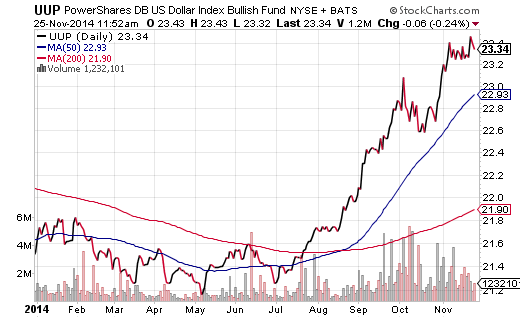Is Your MultiAsset ETF Ready for 2014
Post on: 24 Июнь, 2015 No Comment

Multi-asset ETFs have seen a great deal of inflows and momentum over the last several years. These ETFs run the gamut from portfolios with a broad mix of underlying securities to fund of funds that own a tight group of other diversified ETFs. The asset allocations can include stocks, bonds, commodities, and even alternative investments.
Retail investors and professional portfolio managers use them as core holdings in order to lower risk and achieve their asset allocation targets. This diversification can often times lead to lower volatility than all-stock or -bond portfolios. In addition, they are often used as benchmarks to gauge the success of a balanced mix of securities in relation to an established index.
From a benchmark standpoint, one of the easiest ETFs to track is the iShares Moderate Allocation ETF (NYSEARCA:AOM), which holds a relatively balanced allocation of 53% bonds and 47% stocks. I think that this fund represents the typical Joe Investor portfolio mix that captures a wide swath of both equities and fixed income. In 2013, AOM has gained 9%, which is a respectable return for a balanced ETF in any other year. However, it falls far short of the all-stock SPDR S&P 500 ETF (NYSEARCA:SPY) returns of 29%.
When you dig deeper into the data, it becomes apparent that not all multi-asset ETFs are cut from the same cloth. The divergences in performance are largely dependent on the fund’s underlying holdings and are skewed by over- or underexposure to specific areas of the market.
Let’s take a look at some of the best- and worst-performing multi-asset ETFs with over $100 million in total assets for 2013.
The Winners
The best-performing balanced funds were not surprisingly those with an overabundance of domestic stocks. The top three on my list include the iShares Aggressive Allocation ETF (NYSEARCA:AOA), iShares Growth Allocation ETF (NYSEARCA:AOR), and the Guggenheim Multi-Asset Income ETF (NYSEARCA:CVY). Each posted double-digit returns with AOA besting the group to notch a gain of over 19% so far in 2013.
The first two ETFs are similar to AOM in that they are a traditional asset-allocation style mix with an outsized exposure to equities and modest exposure to fixed income. By contrast, CVY invests in dividend-paying equities, REITs, MLPs, preferred stocks, and other high-yield instruments. The appetite for high-yield equities and lower credit-quality holdings clearly helped boost the returns of CVY this year.
The worst-performing multi-asset ETFs in 2013 had greater exposure to long-duration bonds, mREITs, and other interest rate-sensitive investments. The lowest returns belong to the PowerShares CEF Income Composite (NYSEARCA:PCEF), SPDR SSGA Income Allocation ETF (NYSEARCA:INKM), and the iShares Multi-Asset Income ETF (BATS:IYLD).
Each of these funds was unfortunately susceptible to the headwind of rising interest rates, which hampered performance. The worst performer in the bunch was IYLD, which focuses the majority of its underlying exposure on fixed-income and mortgage REIT holdings.
This ETF has posted a negative return of -2.26% year-to-date.
How to Play Multi-Asset Funds in 2014
Traditional multi-asset ETFs such as AOM can be utilized as a core holding for conservative investors who are looking for broad-based exposure to both equities and fixed income. While their upside may be limited, their lower volatility can be an attractive quality, given the current height on the stock market. The suite of iShares products makes it easy to hone in on the right mix of stocks and bonds that suit your risk tolerance.
If you decide to opt for a specialized income or alternative strategy, keep in mind that their momentum can shift based on independent factors such as credit quality or sector exposure. While a higher income stream may be more attractive, it can also lead to heightened volatility if credit spreads widen or high-yield stocks fall out of favor. For my income clients, I have opted to employ the actively managed Loomis Sayles Strategic Income Fund ( NEZYX ), which focuses on dividend equity, preferred stock, and fixed-income holdings.
Remember, even funds that are in the bottom this year may end up coming back into favor based on the prevailing interest rate and equity market trends we encounter next year. I always recommend keeping a close eye on the underlying holdings of your balanced funds, which can shift based on the constraints of the manager or index. Armed with this knowledge, you will be better prepared for success in 2014 .
Read more from David Fabian, Managing Partner at FMD Capital Management:














